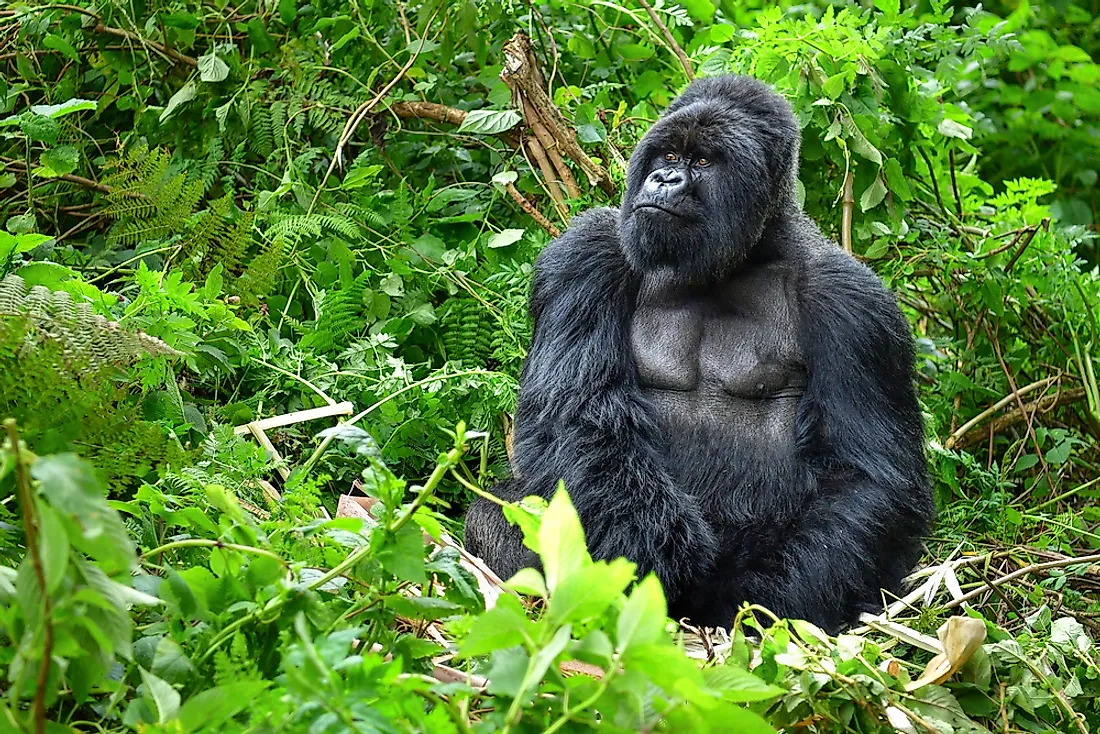Where Do Gorillas Live?

Gorillas are large herbivorous apes who are native to Africa. They are mostly found in the Central African forests. There are two species of gorillas: the eastern and western gorillas. Both species are further divided into two subspecies, all of whom are critically endangered.
The eastern species include the mountain gorillas and the eastern lowland gorillas, while the western species includes the western lowland and Cross River gorillas. The two species and their subspecies originated from the same species of gorilla during the Ice Age. Gorillas are the largest living primates and the closest living relatives to humans after chimpanzees.
Habitat Of Gorilas
Gorillas have a patchy distribution ranging across central, western, and eastern Africa. They thrive in tropical and subtropical forests that run across the equatorial belt. The range of the eastern and western gorillas is separated by the Congo River. The Congo River Basin has plenty of green, lush jungles which facilitate the survival of the gorillas. Gorillas can also live in other types of habitats including dense old-growth forests, mountain and sub-mountain forests, and swamp and savannah forests. However, each subspecies is found in a particular habitat. The western lowland gorillas inhabit the lowlands with marshy tropical forest, often at an altitude of up to 1,600 meters. Cross River gorillas are found in sub-mountain forests and swampy forests. The eastern lowland gorillas spend most of their time in lowland old-growth forest and mountain forests while the mountain gorillas inhabit mist-covered mountain forests
Distribution Of Gorillas
The western gorillas are mainly found in Western and Central Africa including countries such as Equatorial Guinea, Angola, Cameroon, Gabon and the DRC. The eastern gorillas are confined to the mountain forests and subalpine forests of the DRC, Uganda, and Rwanda. Sub-species of both groups live in a variety of habitats and elevation depending on the availability of food. According to the National Geographic, a group of gorillas may inhabit a territory as large as 16 square miles. However, eastern gorillas have smaller home range than western gorillas due to their heavy foliage based diet which is more abundant than fruits.
Behavior And Diet Of Gorillas
Gorillas move in groups known as troops or bands. A troop may have as many as 50 members comprising an adult male, several adult females and their offspring. However, a male-only troop also exists. A dominant male known as silverback is often the leader of the troop. A silverback is typically over 12 years old and has a distinctive patch of silver hair on its back. Gorillas feed in the morning and evening hours and take a nap, play or groom each other in between. At night, they settle in their nests which are constructed on a tree. Gorillas feed on vegetation such as shoots, roots, fruits, and tree pulp. Their diet depends on where they live. Most of the lowland gorillas feed on fruits while the mountain gorillas mainly feed on leaves.
Conservation Status Of Gorillas
All species of gorillas have been listed as Critically Endangered by the IUCN. There are approximately 100,000 western lowland gorillas in the wild and 4,000 in zoos. Eastern lowland gorillas number only 900 in the wild and none in the zoo. Major threats to the gorillas include habitat loss and poaching











